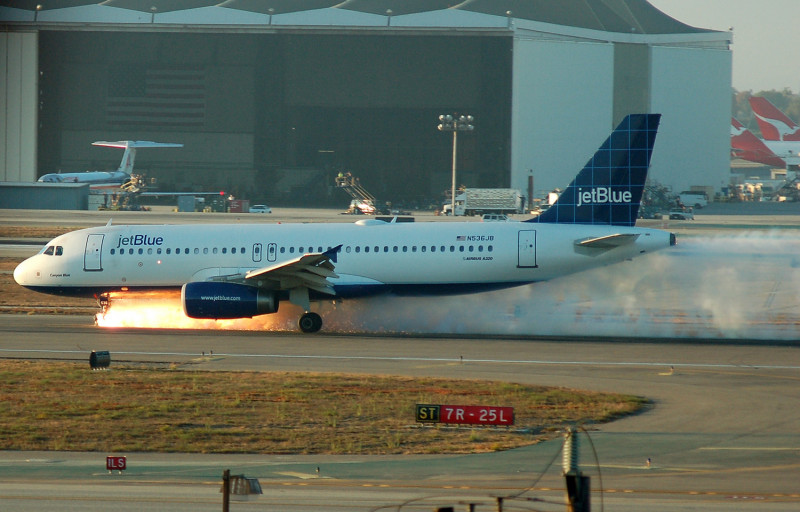Xfinity, a brand of Comcast Corporation launched in 2010, provides consumer cable television, internet, telephone, and wireless services. Previously marketed under the Comcast name, Xfinity represents Comcast's efforts to brand its services for residential customers. It is a major telecommunications provider in the United States, offering a variety of connectivity and entertainment options.
1996: Comcast Internet Services Started
In 1996, Comcast began offering internet services by helping found the @Home Network.
2002: Comcast Moves Internet Customers to Own Network
In 2002, after Excite@Home filed for bankruptcy, Comcast moved approximately 950,000 internet customers onto its own network.
2003: Cost of Basic Cable Subscription
From 2003 to 2012, the average cost of Comcast's Digital Basic cable subscription had increased 72%.
2005: Launch of Xfinity Voice
In 2005, Xfinity Voice (formerly Comcast Digital Voice) was launched in some markets.
2006: Xfinity Voice Expansion
In 2006, Xfinity Voice was launched in all of Comcast's markets.
September 2007: Definition of Excessive Use of Bandwidth
In September 2007, Comcast spokesman Charlie Douglas defined "excessive use" as the equivalent of 30,000 songs, 250,000 pictures, or 13 million emails in a month.
September 2007: Rumors of BitTorrent Throttling
In September 2007, rumors emerged that Comcast was throttling or blocking internet traffic transmitted via the BitTorrent protocol, which Comcast initially denied.
2007: Shutdown of Comcast Digital Phone
Around late 2007, Comcast shut down its older service, Comcast Digital Phone, after completing the transition from their old service.
2007: Peak in Cable Television Customers
Comcast's cable television customers peaked in 2007, with about 24.8 million customers.
2007: US$23.7 billion in revenue
In 2007, Xfinity had US$23.7 billion in revenue.
September 2008: Lawsuit Filed Over Network Management
After the FCC investigated and concluded that Comcast's throttling policies were illegal, Comcast filed a lawsuit in September 2008.
October 1, 2008: Introduction of 250 GB Monthly Bandwidth Cap
On October 1, 2008, Comcast introduced a 250 GB monthly bandwidth cap to its broadband service, combining both upload and download towards the monthly limit.
2009: Comcast Business Class offers 100 Mbit/s Internet service
In 2009, Minneapolis–Saint Paul became the first city in which Comcast Business Class offered 100 Mbit/s Internet service, including Microsoft Communication Services. Comcast Business Class Internet service does not have a bandwidth usage cap.
2009: 7.6 Million Voice Customers
In 2009, after completing the transition from their old service, Comcast had 7.6 million voice customers.
2009: FCC Questions Comcast Voice Practices
In 2009, the FCC questioned Comcast's practice of prioritizing voice data on its private network for Xfinity Voice over other VoIP services, raising concerns about net neutrality.
February 2010: Comcast Rebrands Triple Play Services as Xfinity
In February 2010, Comcast rebranded its consumer triple play service offerings under the Xfinity name. Comcast Digital Cable was renamed "Xfinity TV", Comcast Digital Voice became "Xfinity Voice", and Comcast High-Speed Internet became "Xfinity Internet". The rebranding coincided with the 2010 Winter Olympics.
2010: Xfinity Brand Introduction
In 2010, Comcast introduced the Xfinity brand to market its consumer cable television, internet, telephone, and wireless services, which were previously marketed under the Comcast name.
2010: Overturning of Network Management Illegality
In 2010, Comcast overturned the illegality of its network management in court, as the court ruled that the FCC lacked the authority to enforce net neutrality under the FCC's then current regulatory policy.
2010: Netflix Signs Agreement with Level 3 Communications
In 2010, Netflix signed an agreement with Level 3 Communications to carry its data, leading to a dispute over whether Level 3 would have to pay Comcast to bridge their respective networks.
January 2011: Launch of Internet Essentials Program
In January 2011, Comcast launched its "Internet Essentials" program, offering low-cost internet service to families with children who qualify for free or reduced-price school lunches. The U.S. Federal Communications Commission (FCC) required this service as a condition for allowing Comcast's acquisition of NBCUniversal.
February 20, 2011: Xfinity 3D channel launch
On February 20, 2011, Comcast launched a 3DTV channel known as Xfinity 3D on Xfinity cable systems.
March 2011: Comcast creates Solution Provider Program
In March 2011, Comcast created an indirect sales channel called the Solution Provider Program, which enables telecommunications consultants and system integrators to sell Comcast's services, such as Business Class Internet, Voice, and high-capacity Ethernet services, to small and mid-market businesses. The program offers recurring commissions for sales partners based on monthly revenue.
2011: Start of the period of overcharging for the Service Protection Plan
From 2011 to 2015, Washington State alleged that customers unknowingly paid a total of $71 million for the Service Protection Plan.
2011: 40% of cable internet access market share
In 2011, Comcast was the largest provider of cable internet access in the United States, servicing 40% of the market.
May 2012: X1 platform soft launch
In May 2012, Comcast soft-launched the X1 platform in Boston. The X1 platform featured wider support for internet content, video streaming apps, and a voice recognition remote control. The nationwide launch was scheduled for the end of 2013.
2012: Third-Largest Residential Line Provider
At the start of 2012, Comcast stood as the United States' third-largest residential line provider, supplying 9.34 million residential lines.
2012: Cost of Basic Cable Subscription
From 2003 to 2012, the average cost of Comcast's Digital Basic cable subscription had increased 72%.
2012: Modification of Bandwidth Cap Policy
In 2012, Comcast modified its bandwidth cap policy, replacing the cap with a data threshold and increasing it to 300GB in some markets. Customers who exceed this threshold are charged $10 for every 50 GB above the limit, and can purchase a $30 add-on for "unlimited" data.
June 2013: Internet Essentials Program Participation
As of June 2013, about 220,000 households out of an estimated 2.60 million eligible households were participating in the "Internet Essentials" program.
2013: 10.7 Million Xfinity Voice Subscribers
As of the end of 2013, Comcast Digital Voice had reached 10.7 million subscribers.
2013: X1 scheduled for nationwide availability
By the end of 2013, X1 was scheduled for nationwide availability.
2013: First Quarterly Gain in Customers
In the fourth quarter of 2013, Comcast experienced the first quarterly gain in customers since their peak in 2007, with a total of 21.7 million cable customers.
January 2014: Introduction of Broadcast TV Fee
Since January 2014, Comcast has charged a Broadcast TV Fee to "defray the rising costs of retransmitting broadcast television signals".
February 2014: FCC Announces New Justification
As of February 2014, the FCC announced a new justification, but avoided the more extensive regulation required by the common carrier framework.
February 2014: Netflix Pays Comcast for Network Connection
In February 2014, Netflix and Comcast confirmed that Netflix was paying Comcast to connect to its network. The details of the agreement are not public.
March 2014: Extension of Internet Essentials Program
In March 2014, Comcast vice president David Cohen announced that the Internet Essentials program would be extended indefinitely.
June 25, 2014: American Broadcasting Cos. v. Aereo, Inc. decision
On June 25, 2014, the American Broadcasting Cos. v. Aereo, Inc. case was decided in favor of the broadcasters in a 6–3 decision, with Comcast's subsidiary, NBCUniversal, being one of the broadcasters involved. The case questioned whether Aereo was a retransmitter that needed to pay retransmission fees.
December 16, 2014: Xfinity 3D channel shutdown
On December 16, 2014, Comcast shut down the Xfinity 3D channel on Xfinity cable systems. The channel featured content from NBC Sports and Universal Pictures, as well as content from other studios and demonstration films in 3D.
2014: Class Action Lawsuit Filed Over Home Hotspots
In 2014, a proposed class action lawsuit was filed in California against Comcast, citing violations of the Computer Fraud and Abuse Act and similar state laws, due to concerns regarding security and liability for actions performed by users connected to the company's home hotspots.
2015: End of the period of overcharging for the Service Protection Plan
From 2011 to 2015, Washington State alleged that customers unknowingly paid a total of $71 million for the Service Protection Plan.
2015: Gains in Video Subscribers
In the fourth quarter of 2015, Comcast got 89,000 new video subscribers, their highest gain since 2007.
April 27, 2016: Announcement of Data Threshold Increase
On April 27, 2016, Comcast announced it would raise its data threshold in trial markets to 1 TB by June 2016.
June 2016: Data Threshold Increased to 1TB
By June 2016, Comcast increased its data threshold to 1 TB in trial markets.
August 2016: Lawsuit filed by State of Washington
In August 2016, Xfinity and Comcast were sued by the State of Washington for $100 million over claims of violating the state's Consumer Protection Act. The lawsuit alleged overcharging for call service fees, improper credit screening practices, and misrepresentation of the costs of the Service Protection Plan.
October 2016: Implementation of Bandwidth Thresholds
In October 2016, Comcast announced that bandwidth thresholds would be implemented in the majority of its markets (outside of New York and the northeast) beginning November 1, 2016.
November 1, 2016: Bandwidth Thresholds Implementation
On November 1, 2016, Comcast implemented bandwidth thresholds in the majority of its markets (outside of New York and the northeast).
2016: $50.04 billion in revenue
In 2016, Xfinity achieved $50.04 billion in revenue.
April 6, 2017: Xfinity Mobile launched
On April 6, 2017, Comcast launched Xfinity Mobile, a mobile virtual network operator (MVNO) on the Verizon mobile network.
May 2017: xFi Platform Launch
In May 2017, Comcast launched the xFi platform, a new software platform for its Arris 1682G and Cisco 3941T/3939 modems. The platform offers a redesigned configuration interface, remote setup and management via an Xfinity mobile app, and integration of supported smart home devices with other Xfinity platforms such as Xfinity TV. Comcast also unveiled the xFi Advanced Gateway, a new router designed to facilitate faster Wi-Fi speeds and integration with Internet of things devices.
June 19, 2018: Class action lawsuit filed over unauthorized Xfinity Mobile accounts
On June 19, 2018, Elizabeth O'Neill, an Illinois customer, filed a putative class action lawsuit against Xfinity and Comcast, accusing them of opening Xfinity Mobile accounts for customers without their consent and failing to notify customers when these accounts were infiltrated to buy new cell phones. The case was ruled to be solved in arbitration.
July 26, 2018: 26.5 Million High-Speed Internet Customers
As of July 26, 2018, Comcast had 26.5 million high-speed internet customers.
2018: Xfinity Mobile surpasses 1 million subscribers
In 2018, Xfinity Mobile surpassed 1 million subscribers.
June 2019: Ruling in favor of Washington State
In June 2019, a King County court judge ruled in favor of Washington State and against Comcast, ordering Comcast to pay $9.1 million in penalties and provide restitution to customers within 60 days, following the lawsuit that began in August 2016.
2019: Xfinity Flex launched
In 2019, Comcast launched Xfinity Flex, an add-on for Xfinity Internet offering a digital media player based on the X1 platform with access to over-the-top media services. The service was marketed as an alternative to the full Xfinity TV service for cord-cutters.
May 18, 2020: Xfinity Mobile announces plans with 5G data
On May 18, 2020, Xfinity Mobile announced plans with 5G data.
November 23, 2020: Announcement of 1.2TB Data Cap
On November 23, 2020, Comcast announced a new 1.2TB data cap to be implemented for all of the remaining areas in the northeast by March 2021.
2020: Sponsorship of the Xfinity 500
Since 2020, Xfinity has sponsored the penultimate race in the Cup Series, the Xfinity 500 at Martinsville Speedway.
March 2021: Postponement of 1.2 TB Data Cap Implementation
In March 2021, the implementation of a 1.2TB data cap in the northeast was postponed due to pressure from the Pennsylvanian attorney general, citing concerns about the impact on customers working at home during the COVID-19 pandemic.
October 2021: XClass TV launched
In October 2021, Comcast launched XClass TV, a line of Hisense-manufactured smart TVs based on X1, sold exclusively through Walmart. This marked the first X1-based product to be sold directly at retail to consumers.
December 2022: Trials of 10-Gigabit Service Using DOCSIS 4.0
In December 2022, Comcast announced that it had trialed symmetric, 10-gigabit service using DOCSIS 4.0.
2022: Xfinity Flex and XClass TV rebranded
In 2022, Xfinity Flex and XClass TV were brought under Comcast's Xumo joint venture with Charter Communications, and rebranded as Xumo Stream Box and Xumo TV, respectively.
June 2023: Deployment of 10-Gigabit Service
In June 2023, Comcast deployed its symmetric, 10-gigabit service for selected Gigabit Pro fiber business customers.
December 20, 2023: Xfinity data breach revealed
On December 20, 2023, it was revealed that an Xfinity data breach had exposed the personal data of 35.8 million people, including usernames, passwords, and answers to security questions, due to a vulnerability in the Citrix software used.
2023: Dave Watson as CEO
As of 2023, Dave Watson is the CEO of Xfinity.
2023: Xfinity markets broadband services as "the Xfinity 10G Network"
In 2023, Comcast began marketing all Xfinity broadband services as "the Xfinity 10G Network," coinciding with the introduction of 10-gigabit fiber service for business customers.
January 2024: "Xfinity 10G Network" branding discontinued
In January 2024, Comcast agreed to stop using the "Xfinity 10G Network" branding for its broadband service after the National Advertising Division of the Better Business Bureau (BBB) ruled that the branding was misleading.
April 2024: Rogers rebrands as Rogers Xfinity
In April 2024, Rogers, after acquiring Shaw, announced a deeper technology partnership with Comcast and began rebranding its cable TV and internet products as "Rogers Xfinity".
February 4, 2025: End of Xfinity Series sponsorship
On February 4, 2025, Comcast announced it would no longer sponsor the NASCAR Xfinity Series after 2025 but will remain a premier sponsor of the Cup Series.
Mentioned in this timeline

Microsoft an American multinational technology corporation headquartered in Redmond Washington...

Verizon Communications is a leading American telecommunications company headquartered in...
The National Broadcasting Company NBC is a major American commercial...

Bubba Wallace Jr is a prominent American professional stock car...
Illinois is a Midwestern U S state bordering Lake Michigan...

Kyle Busch is a highly successful American stock car racing...
Trending

2 months ago Mamdani Addresses Trump on Fox News, Vows Different Mayoral Approach, Apologizes to NYPD
6 months ago Oman: Cooperation talks, plastics growth, and ghost plume reshaping Earth detected.
1 month ago Avelo Adds Routes, Offers Cheap Flights: $34 to Florida, $35 from Concord.

2 months ago Widespread Flight Cancellations and Delays Ground Thousands of Passengers Across the US
7 months ago Russian Bridges Collapse: Train Derailment Claims Lives Near Ukraine, Leaving Seven Dead
5 months ago Dominican Republic's Credit Rating Upgraded by Moody's to Ba2: Economic Boost
Popular

XXXTentacion born Jahseh Dwayne Ricardo Onfroy was a controversial yet...

Stranger Things created by the Duffer Brothers is a popular...
The Kennedy Center Honors are annual awards recognizing individuals and...
Turning Point USA TPUSA is an American nonprofit organization founded...

Candace Owens is an American conservative political commentator and author...

William Franklin Graham III commonly known as Franklin Graham is...
